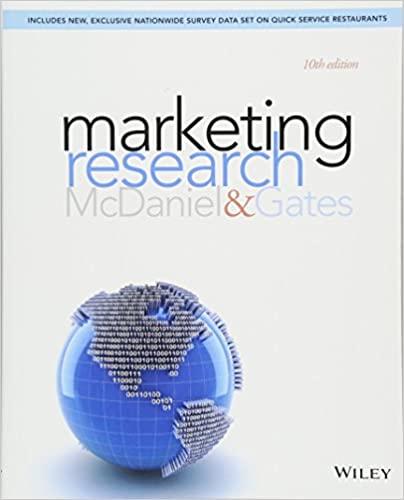Researchers are caring by nature. We worry about many things during a project. We make sure every
Question:
Researchers are caring by nature. We worry about many things during a project. We make sure every last detail of the survey is perfect. We write—and rewrite—questions, thinking about that one person who might not understand what we mean. We continually test the survey and monitor it all very closely as the “completes” start coming in. Are we going over quota? What is the drop-off? Is the survey too long?
Over the course of writing the report, we develop a keen insight into all the subtleties and details of the data we are examining. Because of this, we want to make sure clients (internal or external) know about every last interesting difference we find. This typically results in a 50-plus-page report with hundreds, if not thousands, of data points and a variety of graphs, charts, and tables. We, of course, sum it up in a concise executive summary, hoping that it will interest a senior executive just enough to dive into the rest of the immensely interesting minutiae of data. And that is our problem: We are hoping that someone is going read it.
No matter how compelling In my almost 20 years in the field, my experience has been that no matter how compelling we make the deck, no marketing manager or senior executive wants to read half of a report to find out why his new product idea sucks and how to fix it. They don’t even want to read half of a report if it’s good news. In fact, the typical experience is that they are going to take the three or four key ideas talked about in the presentation and make them their talking points. They rarely go back to the deck.
So what does that mean for us?
We need to become strategic storytellers. While this is not a new idea and you may be saying, “I am already doing this,” the new economic reality of shrinking budgets, tighter deadlines and fewer in-house research resources has made it more important than ever that we change how we tell our stories and who we tell them to, as our clients are more frequently not researchers themselves anymore.
Questions
1. What does the author mean by “starting at the finish line”? Does that approach make sense to you? Why or why not?
2. What is the difference between data and insights? What are today’s decision makers looking for?
3. Do decision makers want to go through a detailed 50-page Power Point deck to arrive at the conclusions? Why do you say that?
4. Should your research report and presentation tell a story? Why do you say that?
5. Do you want to inspire clients with your report and presentation? What are the advantages, if any, of doing that?
Step by Step Answer:






